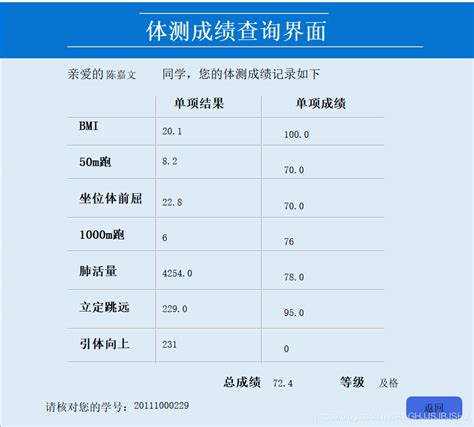大学生大数据技术设备管理周报
Title: Effective Student Management Strategies with Big Data
In the realm of education, leveraging big data analytics can revolutionize student management, offering insights into student performance, behavior patterns, and learning preferences. By harnessing the power of big data, educational institutions can enhance student engagement, academic success, and overall satisfaction. Let's delve into some effective strategies for utilizing big data in student management:
1. Early Intervention Systems:
Implement predictive analytics to identify atrisk students based on various indicators such as attendance records, grades, and participation levels.
Create early intervention protocols to provide timely support and resources for struggling students, thereby improving retention rates.
2. Personalized Learning Paths:
Utilize data analytics to assess each student's learning style, strengths, and weaknesses.
Develop personalized learning paths and adaptive curriculum to cater to individual student needs, fostering a more effective and engaging learning experience.
3. Performance Tracking and Analysis:
Utilize big data tools to track and analyze student performance across various subjects and assessments.
Identify trends, patterns, and areas for improvement, enabling educators to make datadriven decisions to optimize teaching strategies.
4. Resource Allocation Optimization:
Analyze data on resource utilization, such as classroom facilities, teaching materials, and staff allocation.
Optimize resource allocation based on demand patterns and usage trends, ensuring efficient utilization and costeffectiveness.
5. Student Engagement Enhancement:
Utilize data analytics to gauge student engagement levels through various metrics, including participation rates, interaction with course materials, and social integration.
Tailor interventions and initiatives to enhance student engagement, such as gamification elements, interactive content, and collaborative learning activities.
6. Predictive Modeling for Graduation Rates:
Develop predictive models using historical data to forecast graduation rates and identify factors influencing student success.

Implement targeted interventions and support programs to improve graduation rates and reduce dropout rates.
7. Feedback Analysis and Actionable Insights:
Collect and analyze feedback from students, parents, and faculty members using sentiment analysis and text mining techniques.
Extract actionable insights to address concerns, improve teaching methodologies, and enhance overall student satisfaction.
8. Continuous Improvement through DataDriven Decision Making:
Foster a culture of continuous improvement by encouraging educators and administrators to make datadriven decisions.
Provide training and support in data analysis tools and methodologies to empower stakeholders in leveraging big data effectively.
9. Privacy and Ethical Considerations:
Prioritize student data privacy and security by implementing robust data protection measures and complying with relevant regulations such as GDPR and FERPA.
Ensure transparency and accountability in data collection, usage, and storage practices to build trust among students, parents, and stakeholders.
10. Collaborative Partnerships and Knowledge Sharing:
Foster collaborative partnerships with industry experts, research institutions, and technology vendors to stay abreast of the latest trends and best practices in big data analytics for education.
Facilitate knowledge sharing and peer learning among educational institutions to exchange insights, challenges, and success stories in leveraging big data for student management.
In conclusion, big data analytics holds immense potential in transforming student management practices, enabling educational institutions to enhance student outcomes, optimize resource allocation, and foster a culture of continuous improvement. By embracing datadriven approaches and leveraging advanced analytics tools, educators can tailor learning experiences to meet the diverse needs of students, ultimately leading to improved academic performance and student success.
标签: 大数据学生成绩分析 仁怀市学生资助大数据管理系统 大数据管理就业方向及前景
相关文章
-
景顺成长,探索中国城市化进程中的绿色发展之路详细阅读

在21世纪的今天,城市化已成为全球范围内不可逆转的趋势,中国,作为世界上人口最多的国家,其城市化进程尤为引人注目,随着经济的快速发展,城市化带来的问题...
2025-10-01 198
-
深度解析,股票000777中核科技的投资价值与未来展望详细阅读

在当今的投资市场中,股票投资无疑是一个热门话题,而在众多股票中,股票代码为000777的中核科技因其独特的行业地位和发展潜力,吸引了众多投资者的目光,...
2025-09-30 240
-
深圳证券交易所交易规则,投资市场的指南针详细阅读

亲爱的读者,想象一下,你正站在一个繁忙的十字路口,四周是熙熙攘攘的人群和川流不息的车辆,每个人都在按照交通规则行事,红灯停,绿灯行,黄灯亮起时,大家会...
2025-09-30 200
-
基金202005,揭秘投资背后的逻辑与策略详细阅读

在投资的世界里,基金是一种备受瞩目的投资工具,它以其多样化的投资组合、专业的管理团队和相对稳定的收益吸引了众多投资者的目光,我们将深入探讨基金2020...
2025-09-30 193
-
探索中国平安行销,策略、实践与未来趋势详细阅读

在当今竞争激烈的市场环境中,行销策略对于企业的成功至关重要,中国平安,作为中国领先的金融服务集团,其行销策略不仅在国内市场上取得了显著成效,也为全球行...
2025-09-29 200
-
深入解析数码视讯股票,投资价值与市场前景详细阅读

在当今数字化时代,数码视讯行业作为信息技术领域的重要组成部分,正逐渐成为投资者关注的焦点,本文将深入探讨数码视讯股票的投资价值与市场前景,帮助投资者更...
2025-09-29 241
-
悦康药业,创新与责任并重,引领健康未来详细阅读

在当今这个快节奏、高压力的社会中,健康成为了人们越来越关注的话题,而在医药行业中,有这样一家企业,它以创新为驱动,以责任为担当,致力于提供高质量的药品...
2025-09-29 192
-
深度解析,定向增发股票背后的资本游戏与投资策略详细阅读

在资本市场的棋盘上,股票的每一次变动都牵动着投资者的神经,定向增发作为一种特殊的融资方式,因其能够为上市公司带来资金的同时,也为投资者提供了新的投资机...
2025-09-29 196
